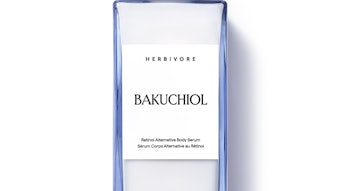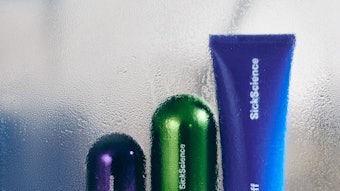When the word “innovation” has become an industry buzzword, saying a new cosmetic active is a “multi-innovation” might sound a bit overstated. However, when it’s possible to demonstrate its originality, multimodality, complementarity and unsurpassed quality, skepticism turns into conviction.
Modern lifestyle including UV exposure and the use of certain cosmetics can affect sensitive skin causing redness, irritation, acne, sunburn and premature aging. A common underlying cause of these skin conditions is inflammation.
There are ingredient options that down regulate the expression of inflammation mediators, which effectively protect the skin against UV or chemical-induced irritation. Biopharmacopae Design International’s
Calming the Skin
In recent years, the cosmetic industry has developed very potent actives to effectively fight the signs of skin aging, namely Retinol, but the acceptance of these actives is limited due to the burning and scaling often associated with use. There are, however, ways to mediate these side effects and create ingredient synergies. In a blind study, Sereniks-207 was tested in combination with Retinol to assess their potential synergy, and results showed a dramatic decrease in the Retinol-induced redness when the volunteers were treated with the combination Retinol-Sereniks-207, when compared to the use of a formulation containing Retinol alone.
Protecting the Skin Against Premature Aging
Sagging, thinning and wrinkling skin, associated with aging, are triggered by several molecular mechanisms of action including cumulative damages caused by oxidative stress, the activation of proteases (any enzyme that breaks down proteins) damaging collagen and elastic fibers, and the induction of pro-inflammatory cytokines (proteins that carry signals between cells).
Skin cells are embedded in a matrix of fibrous extra-cellular proteins that include collagen, elastin and other components, and this structure provides a support for cell growth, cell motility and nutriments transport. Aging and environmental stress exposure leads to the activation of collagen and elastin damaging proteases, which further trigger repairing commands at the cellular level. Consequently, leukocytes are mobilized, a phenomenon that can lead to inflammation.
Today, there are actives that can provide multiple benefits to skin aging formulations by precisely targeting these molecular mechanisms of action.
For example, the antioxidant potential of Canadian hemlock tree needles was evaluated using the Oxygen Radical Absorbance Capacity (ORAC) assay, which measures the oxidative degradation of a fluorescent molecule. Results revealed that the derived ingredient, Sereniks-207, advantageously compares to ECGC (a green tea active compound) and ascorbic acid, both already known for their antioxidant properties. In addition to down regulating the expression of inflammation messengers, this new active has also demonstrated the ability to inhibit the activity of major proteases involved in skin aging and photo aging.
Diane Bilodeau, Ph.D., is scientific advisor with more than 20 years experience in the cosmetic and nutrition industry. Biopharmacopae Design International Inc. (BDI) is a Canadian biotech company that seeks to take efficacy to the next level.










